Temperatures and clock rates
First, let's look at the temperature development of the OpenGL loop with the 1000 stones and also keep an eye on the actual available clock of the GPU. This is hardly lower in the average, even if the GPU diode even shows values above the 90-degree mark at the end. AMD has set the limit temperature (again) at 95°C, which is a little too high for our taste – at least with the old BIOS.
What we can note and positively highlight, however, is the fact that this card works much closer to the sweet spot than the significantly higher overclocked consumer cards of the Radeon-RX-480 series, which in one side absorb significantly more power and on the other hand can't sustain high initial clock rates. The Radeon Pro WX 7100 is more modest in its in-house, so you can also operate with a single-slot cooling system.
Old BIOS
Due to the significantly too low fan speeds, the temperatures are well above the 90°C mark and thus significantly higher than it seems to be beneficial for long-term durability:
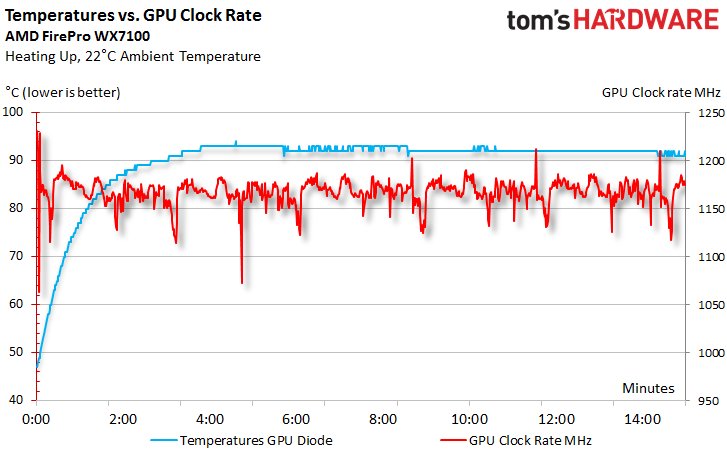
New BIOS
Now you are at 85°C a whole eight (!) Kelvin under what we still had to measure with the old BIOS. The improvement is significant and can definitely be described as successful:
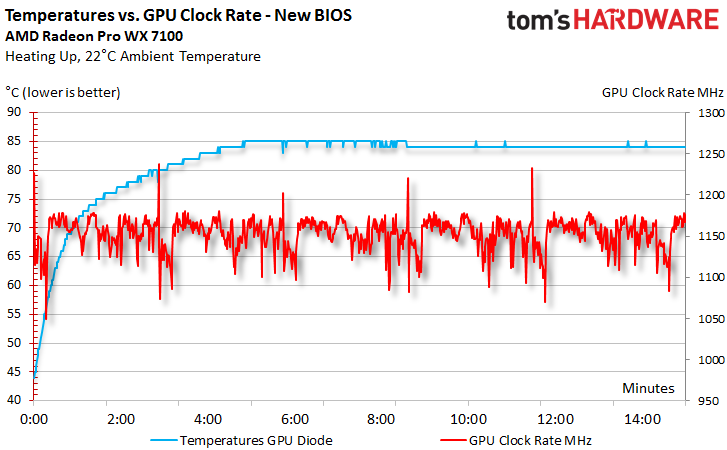
Infrared measurement: Old versus new BIOS
But is this project of single-slot cooling really as confident as planned? Normally safe, because the two cases now presented are again full-load scenarios of the very first quality. The OpenGL-Loop corresponds almost to the watt exactly what our normal gaming loop with Metro Last Light demands. This now looks relatively violent with the old BIOS, whereby especially the voltage converters release neat waste heat – also to the board.
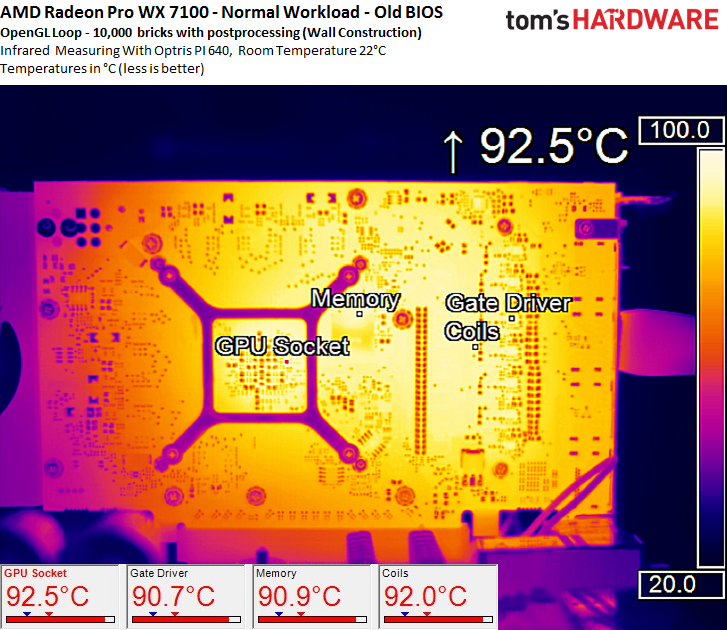
There are exactly two reasons for this. First, the rather small-sized VRM cooler at the top is flooded by far too little air (the air pressure is definitely not sufficient) and secondly, the HEXFETs used with the metal housing ensure that a lot of waste heat directly to the top of the board and not into the cooler. However, it was enough to significantly increase this air pressure in the new BIOS with higher fan speeds:
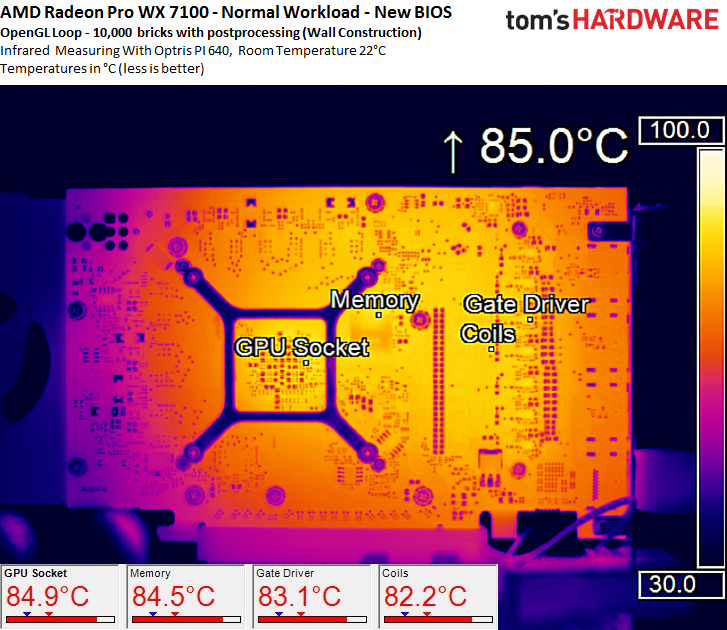
This area is particularly challenged in the stress test, although the power consumption has not increased on average. This is mainly due to the fact that the voltage changes are significantly more moderate and the curve of the MOSFET in the efficiency window thus shifts significantly towards lower efficiencies. First, let's look at the old BIOS variant again:
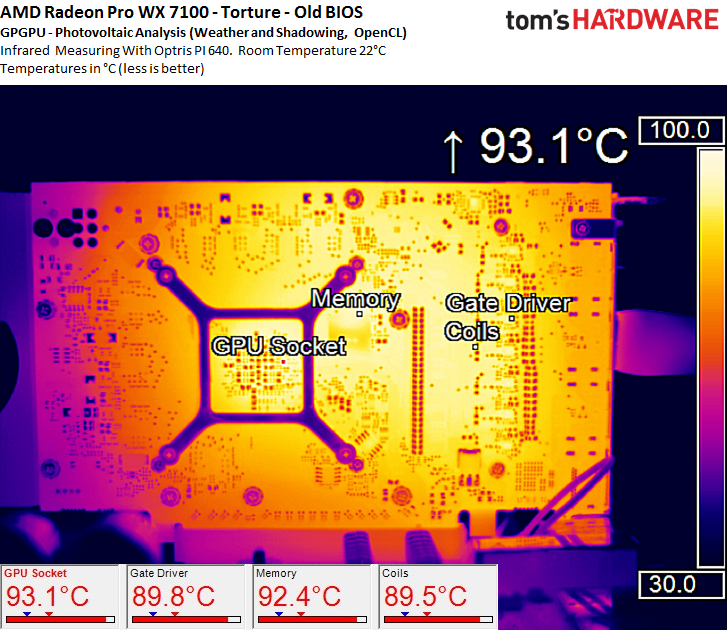
Unfortunately, this second circumstance with the metal enclosure also affects the board layout itself, because the super projection also shows that, for example, the gate drivers are directly below the high-side MOSFET. Its waste heat then forms a nice hotspot under the gate-driver.
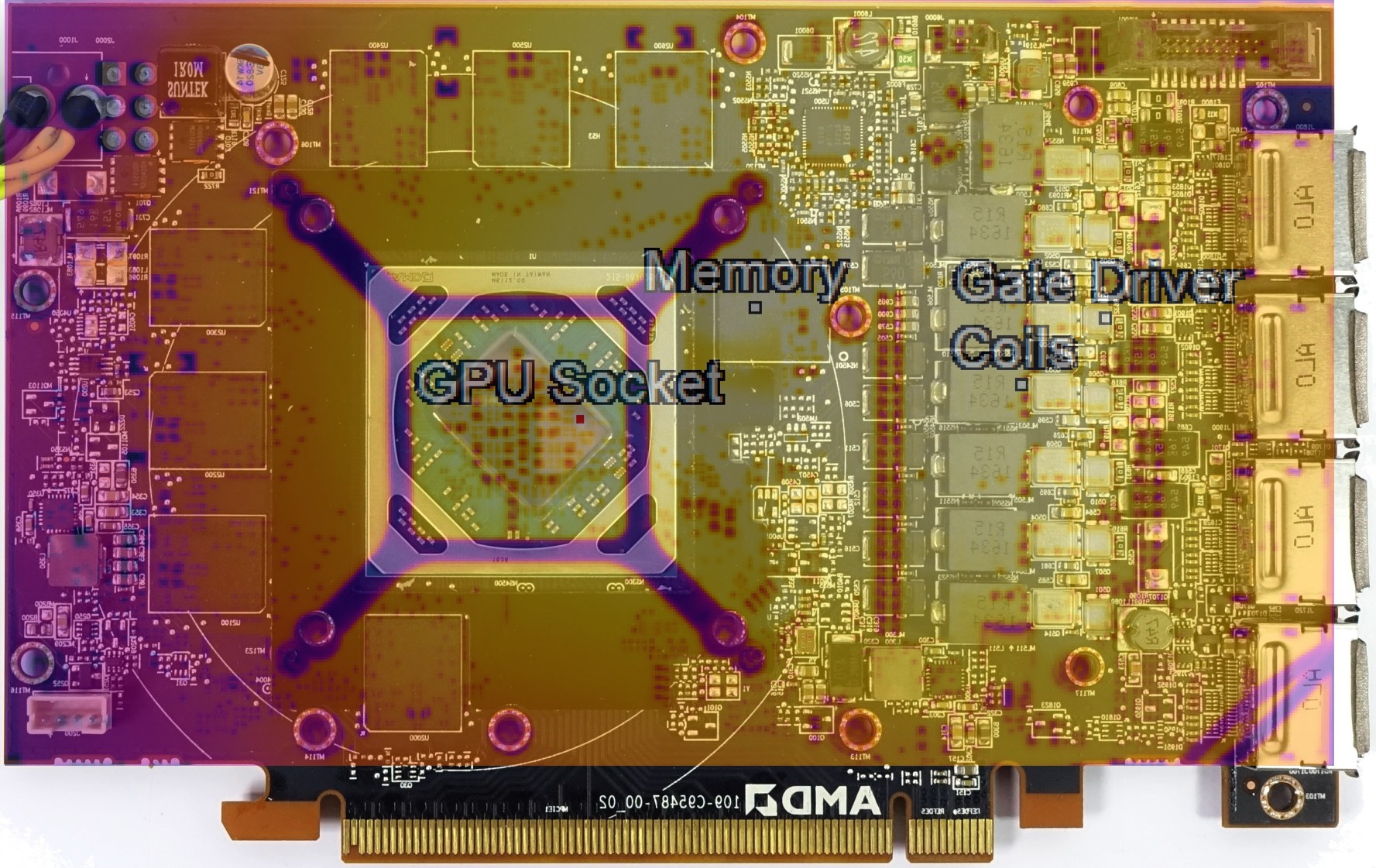
We have already personally discussed this with AMD's senior product manager for AMD's Radeon Pro division and described our view of things, especially since the readings in the closed workstation hardly looked better despite the housing fans being activated. The board as well as the fan and the speeds were the subject of our discussion.
The new BIOS, which we received yesterday together with the new drivers, produces a much better and absolutely acceptable infrared image:
Fan speeds and noise emissions
For these measurements, we again compare both BIOS versions and contrast the results with each other. If we first look at the fan and the speeds, we find that with the old BIOS even the expected 3000 rpm are missed smoothly, which then leads – as was already very well observed in the infrared measurements above – to the very high temperatures:
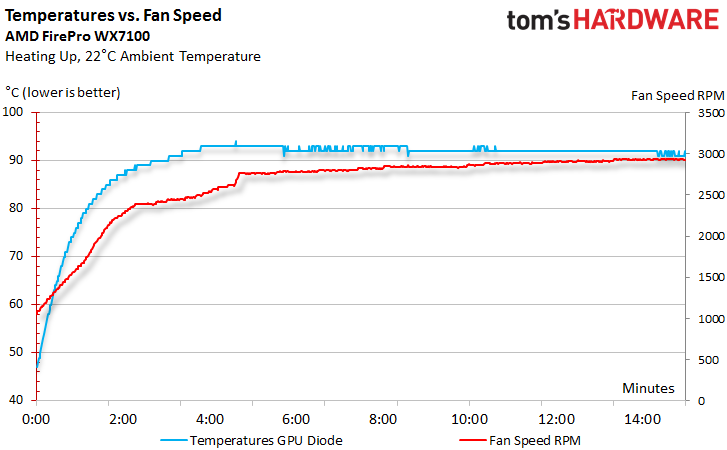
A consultation with AMD's product management also revealed that one would have expected up to 3600 rpm in the temperatures we reached. With the help of the new BIOS, the temperatures are now also in the green range, which is causing both the GPU and the board and their components to plump:
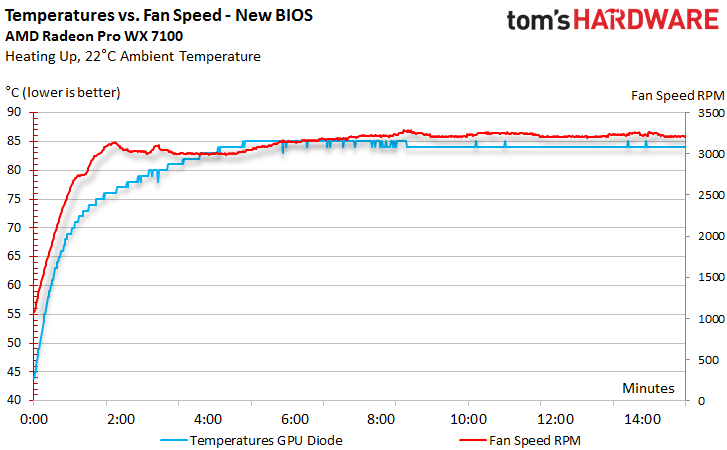
But each fan action naturally leaves its acoustic traces or furrows, depending on the. Finally, let us briefly consider the resulting sound image at the maximum noise emission under longer full load (OpenGL).

As always, the measurements are made in our low-reflection room on a water-cooled, special silent system. The practical lower limit of our room-in-room concept is approximately 22 dB(A) – due to the running hardware.
If you would like to know more details about our measurements, please refer to the basic article Tom's Hardware internally: This is how we test noise emissions.
| Test system and hardware | |
|---|---|
| Microphone: | NTI Audio M2211 (with calibration file, low cut at 50 Hz) |
| Amplifier: | Steinberg UR12 (with phantom power for the microphones) |
| Hardware: | Graphics card test system with optimized water cooling: – Intel Core i7-5930K x 4.2GHz, water-cooled – Crucial Ballistix Sport, 4x 4 GByte DDR4-2400 – MSI X99S XPower AC – 1x Crucial MX200, 500-GByte SSD (System) – 1x Corsair Force LS, 960-GByte-SSD (Applications, Data) – Be Quiet! Dark Power Pro, 850-watt power supply |
| Watercooling: | – Alphacool VPP655 pump (regulated) – Alphacool NexXxos CPU cooler – Phobya Balancer – Alphacool 24cm radiator – 2x 12 cm noise blocker eLoop fan . . . . . . . . . . . . . . . . . . . . . . . |
| Software: | Smaart v.7 |
| Measuring room: | own low-reflection measuring room, 3.5 x 1.8 x 2.2 m (LxTxH) |
| Control measurements: | Axial measurements, perpendicular to the center of the sound source(s), measuring distance 50 cm |
| Output: | – Noise generation in dBA (Slow) as RTA measurement – Frequency spectrum of the emitted noises (graphic) |
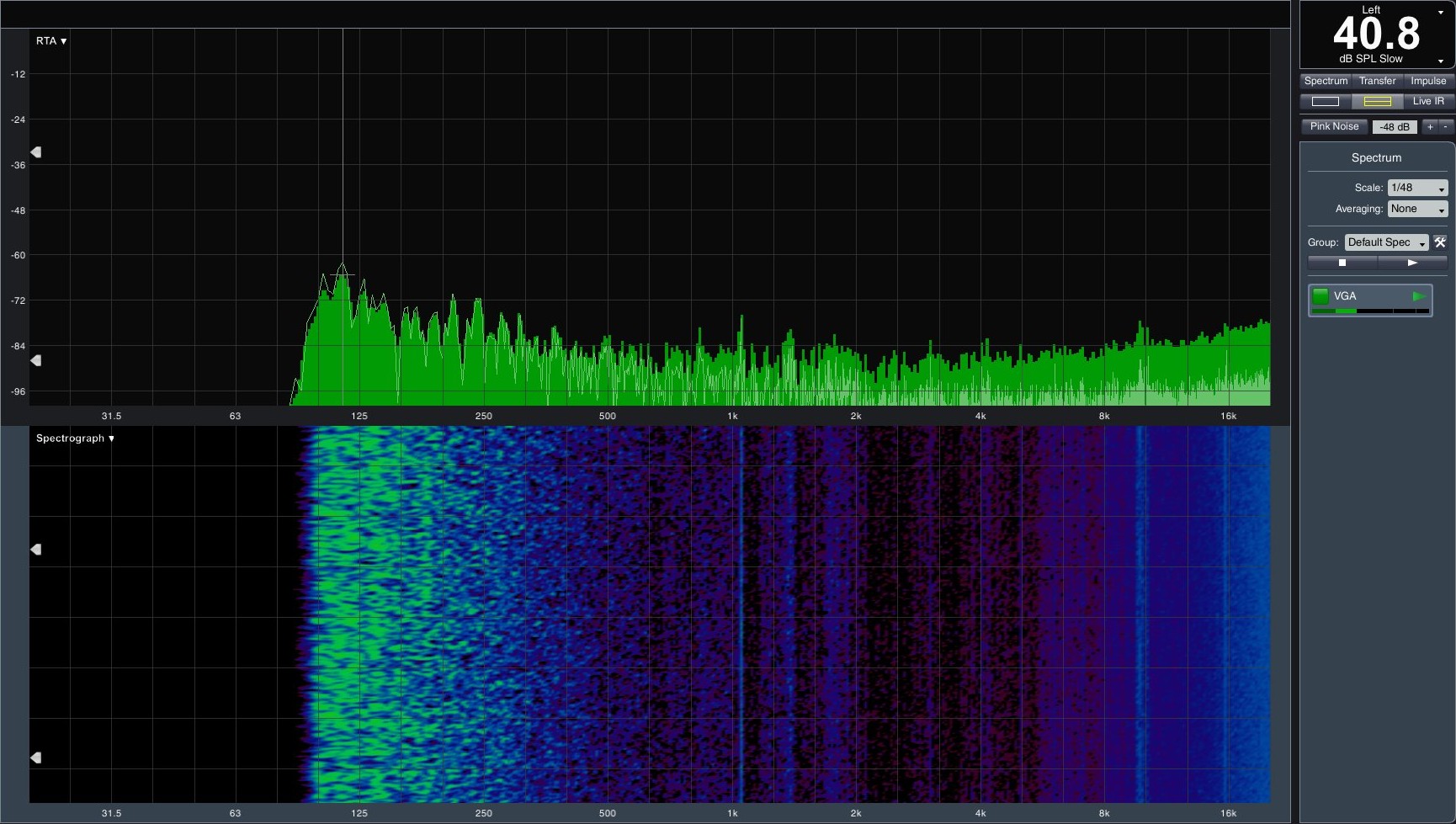
The almost 41 dB(A) with the old BIOS are not only more than okay for such a flat man, because just under 140 watts can't just be shoveled away like that – and the physics can't be tricked. But the flip side of this action is a clearly too hot map.
With the new BIOS, the fan is on average 450 to 500 rpm more, which is of course also very noticeable acoustically. With at least 3.5 dB(A) more, the card is still not a "real" nerve killer, but purely subjectively it seems to us almost twice as loud as with the old BIOS.
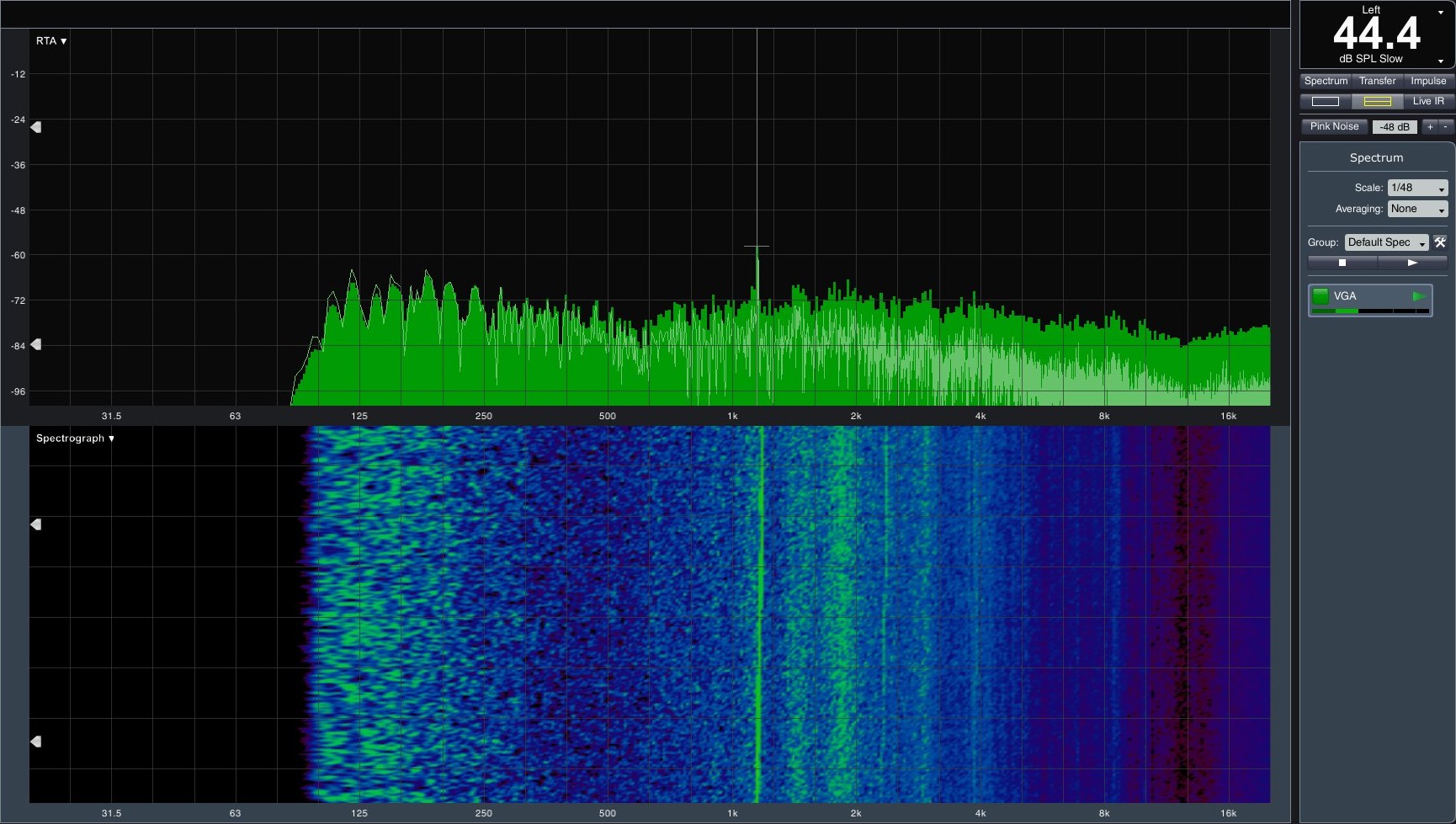
But if we are honest and look at benefits and consequences, we would much prefer a louder but more durable map. Cooling is not a witch's work and enough air for cooling must be, he says.















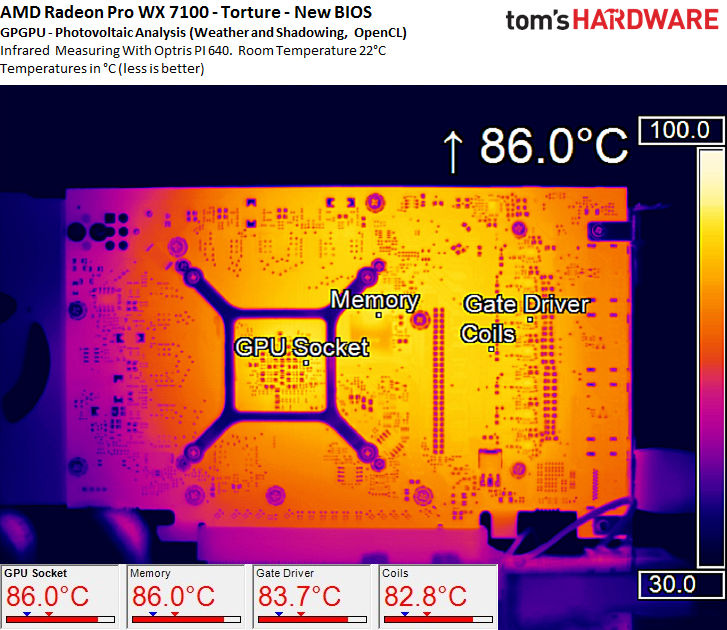

















Kommentieren